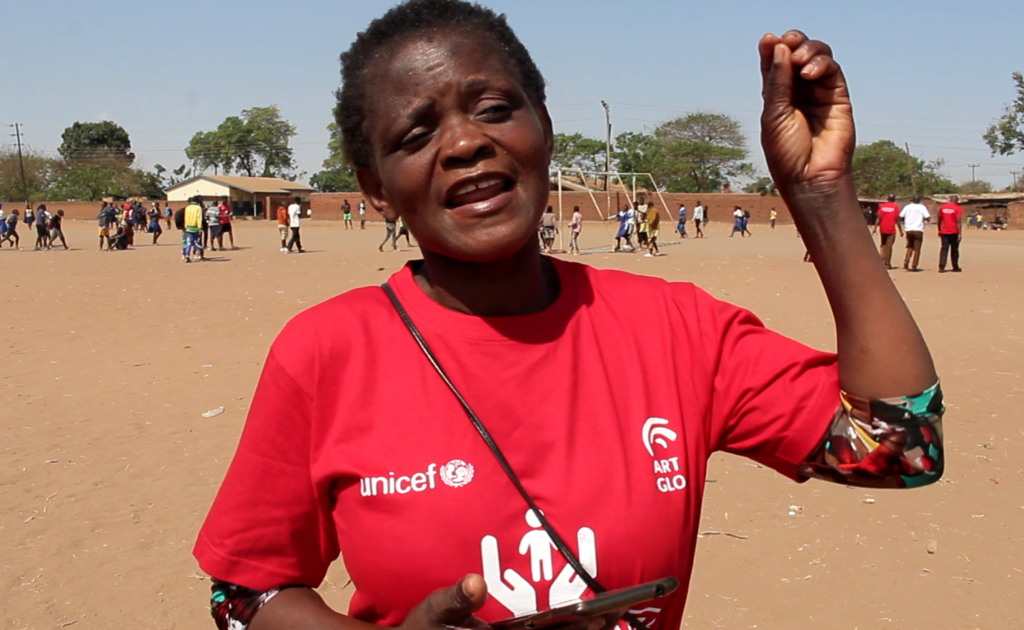The UNICEF Child Protection project implemented by ArtGlo, has made significant strides in empowering communities to take a hands-on role in addressing child protection issues. One of the most impactful aspects of the project has been fostering community-driven solutions to child rights violations, enabling local leaders and facilitators to step up and resolve these issues without over-reliance on external authorities.
A shining example of this is the Children’s Corner initiative, which creates safe spaces for children to gather, interact, and share experiences about their lives. One particular case from Kumara Children’s Corner in Traditional Authority (TA) Chiseka, overseen by Child Protection Worker (CPW) Doreen Mumphonya, illustrates just how powerful community involvement can be in addressing child protection challenges.
In this remarkable incident, a local facilitator noticed that one of the regular children was absent from the Children’s Corner activities. Concerned with the sudden change, the facilitator took the initiative to investigate the absence. What followed showcased the strength of community-led action. The missing girl had been married off to another child, a situation that, in many cases, would escalate to formal interventions involving law enforcement, often causing fear or strain within the community.
However, this time, the community chose a different path. “Rather than immediately involving the police, the facilitator, local authorities, including chiefs and community leaders, and I came together to resolve the issue,” Doreen recalls. With trust and collaboration as the foundation, the local team was able to reverse the marriage, safeguarding both the girl’s and the boy’s futures. Both children were enrolled back in school, the girl in Standard 7 and the boy in Standard 8, and they continue their education today.
This case highlights the success of empowering community leaders and facilitators through the Children’s Corner program. It underscores how, with the right training, communities can address sensitive child protection issues effectively while maintaining harmony and trust within the community. The program’s approach has proven to be a lifeline, not just for children, but for the entire community.
Beyond this individual success, Doreen shared more about the broader achievements of the program in her area. Since its inception, they have rescued 109 children and helped them return to school. Partnerships with key stakeholders, including chiefs, police, healthcare workers, teachers, and community-based organizations (CBOs), have been critical to the project’s success. These collaborations ensure that child protection services are delivered in a holistic and community-focused manner.
Doreen also highlighted the unique challenges they face, particularly the high incidence of abandoned children, a byproduct of widespread sex work in the area. One heart-wrenching case involved a 1-month-old boy who was abandoned in a pit latrine. Thankfully, the baby was rescued, treated at the hospital, and eventually placed in a safe home. Another prominent issue in the community is defilement, which remains an ongoing concern.
Despite these challenges, Doreen remains committed to the cause. She noted that she needs to visit 88 Teacher Development Centres (TDCs) to continue raising awareness and building capacity, but transport issues often hinder these efforts. “When you teach a child, you have taught the nation,” she said, echoing the sentiment that child protection is everyone’s responsibility.
Doreen encourages community members to stay actively involved, emphasizing that the well-being and future of children lie in the hands of those closest to them. Thanks to ArtGlo and UNICEF, communities are not only being empowered to protect their children, but are becoming stronger, more cohesive units in the process.



